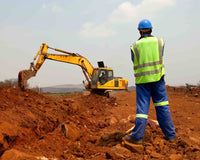 Before you care for a burn you must first identify the type of burn you are treating. Burns are classified according to the amount of tissue they affect and how deep they are.
Before you care for a burn you must first identify the type of burn you are treating. Burns are classified according to the amount of tissue they affect and how deep they are.
First Degree Burns are the least severe. They are red and very sensitive to touch, and skin will appear blanched when light pressure is applied. First-degree burns involve minimal tissue damage and they involve the epidermis (skin surface). These burns affect the outer-layer of skin causing pain, redness and swelling. Sunburn is a good example of a first-degree burn.
First Aid for First Degree burns:
1. If the skin is not broken, run cool water over the burned area or soak it in a cool water (NOT ICE WATER) bath. Keep the area in the bath for five minutes. If the burn occurred in a cold environment, DO NOT apply water. A clean, cold, wet towel will also help reduce pain.
2. Burns can be extremely painful, reassure the victim and keep them calm.
3. After flushing or soaking the burn for several minutes, cover the burn with a sterile non-adhesive bandage or clean cloth.
4. Protect the burn from friction and pressure.
5. Over-the-counter pain medications may be used to help relieve pain; they may also help reduce inflammation and swelling.
6. Minor burns will usually heal without further treatment.
Second Degree Burns are deeper than first degree burns. They affect both the outer-layer (epidermis) and the under lying layer of skin (dermis). Second degree burns are distinguished by the blistery, red blotchy marks they leave on the skin. Blisters form in these burns because the burn penetrates deeper into the layers of skin, releasing body fluids that erupt and cause blisters on the surface. Sometimes the burned area will swell or ooze, and it is painful.
First Aid for Second Degree Burns:
1. Submerge the burned area in cold water (as cold as possible). If the burn occurred on the chest or back, apply a burn wrap or pour cold water from a bucket or a hose directly onto the burn.
2. Keep the cold water on the burn until medical help arrives. If the burns are minor, keep them in cold water for at least five minutes.
3. If the burns are extensive, you can apply a cool, wet cloth to the affected area, but only if the dressing is wrapped in plastic. Cloth tends to adhere to burns, and it can worsen the pain if a physician has to pull it off to treat the burn.
4. If the burns are minor, you can treat them in the same way you'd treat first-degree ones. You won't need medical help. Simply pat the area dry and place a loose sterile cloth over it.
Third Degree Burns are the deepest and most severe. Skin with a third-degree burn may appear white or black and leathery on the surface. This severe burn destroys the nerves and blood vessels in the skin. Because the nerves are damaged, there is little or no pain at first. Healing from third-degree burns is very slow due the skin tissue and structures being destroyed. Third-degree burns usually result in extensive scarring. Third Degree Burns require emergency medical treatment.
First Aid for Third Degree Burns:
1. Call for medical attention if access is immediately available.
2. DO NOT remove burnt clothing (unless it comes off easily), but do ensure that the victim is not in contact with burning or smoldering materials.
3. Make sure the victim is breathing. If breathing has stopped or the victim's airway is blocked then open the airway and if necessary begin CPR.
4. If the victim is breathing, cover the burn with a cool moist sterile bandage or clean cloth. DO NOT use a blanket or towel; a sheet is best for large burns. DO NOT apply any ointments and avoid breaking blisters.
5. If fingers or toes have been burned, separate them with dry sterile, non-adhesive dressings.
6. Elevate the burned area and protect it from pressure or friction.
7. Take steps to prevent shock. Lay the victim flat elevate the feet about 12 inches, and cover the victim with a coat or blanket. DO NOT place the victim in the shock position if a head, neck, back, or leg injury is suspected or if it makes the victim uncomfortable.
8. Continue to monitor the victim's vital signs (breathing, pulse, blood pressure).
As with all safety issues, it is best to practice preventative measures to stop injuries from occurring in the first place. To avoid burns, be sure to suit up with the proper protective gear, from fire-resistant work gloves to fire-proof apparel.
Enviro-Safety is a one stop solution for all the safety products. Contact us for more enquiry related to safety products.




